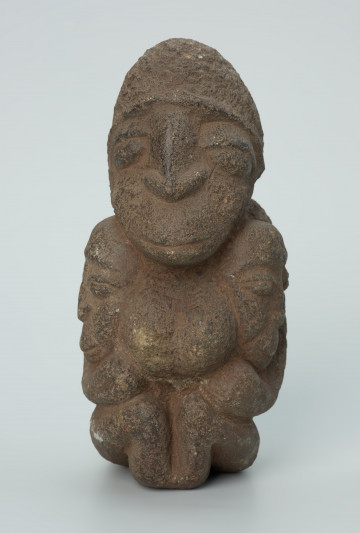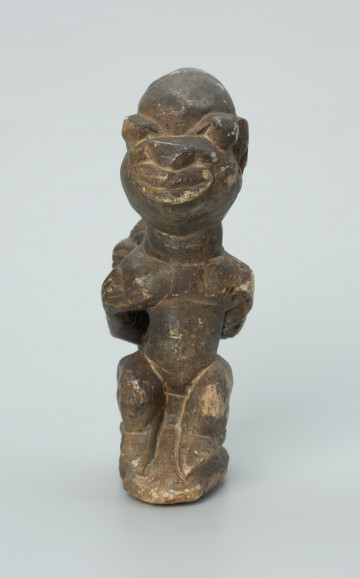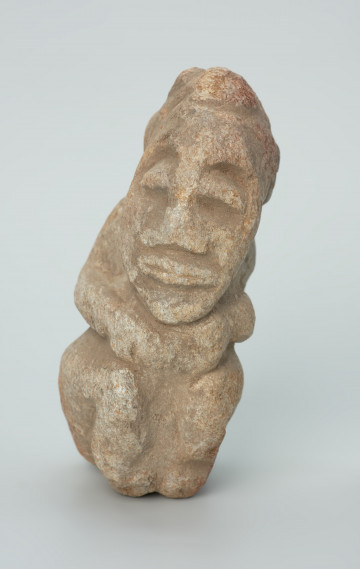
Figure of cult of dead
1901 — 1973
National Museum in Szczecin
Part of the collection: Stone figurines from West Africa
The Temne people of Sierra Leone have found stone carvings, such as the figure presented, in the ground during agricultural work. The Temne call them ka-mal (singular ta-mal) and believe supernatural spirit beings made them. They put them in the place of worship of the am-boro ma-sar, or house of stones, and treat them as ancestors, believing that they ensure their prosperity. Ka-mal is usually laid on a raised, folded mat covered with a white cloth, also used for sleeping. It is meant to signify a transitional state between the metaphysical world of spirits and the physical world of humans. Also important is the positioning of the sculptures, which symbolises the journey to the afterlife. The Temne believe that the dead ancestors are similar to the living. Like people, they get cold at night, so they are left with a cloth to cover themselves. The deceased ancestor may dream of the living and complain about their care, so it is vital to ensure that the figures are entirely comfortable and convenient.The soapstone ta-mal figure in question depicts a male figure sitting with his mouth wide open, from which slightly filed teeth emerge. The practice of filing or extracting teeth is still practised among the Temne today. Both men and women perform this procedure for aesthetic purposes and to emphasise their status. Some experts claim that visible teeth in ka-mal figures are supposed to indicate a person's status; others believe that an open mouth with visible teeth can express a smile because in the Temne language, the word ngay, meaning smile, literally means show teeth.
Katarzyna Findlik-Gawron
Author / creator
Dimensions
cały obiekt: height: 33,5 cm, width: 14,6 cm
Object type
figure
Creation time / dating
Creation / finding place
Identification number
Location / status

1901 — 1973
National Museum in Szczecin

1901 — 1971
National Museum in Szczecin

1901 — 1967
National Museum in Szczecin
DISCOVER this TOPIC
National Museum in Szczecin
DISCOVER this PATH
Educational path